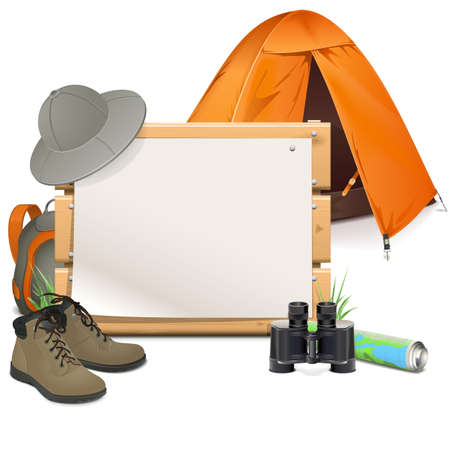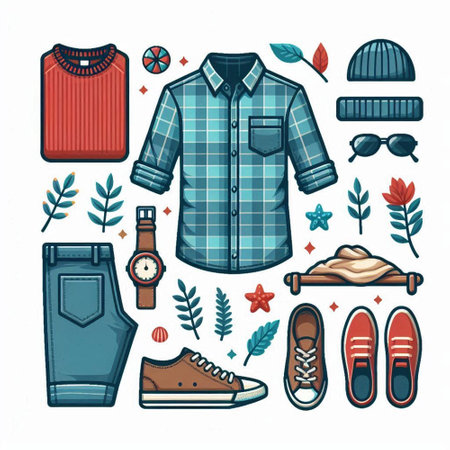1. Lightweight and Weather-Resistant Tent
Spring weather can be unpredictable across the US, from cool mornings in the Rockies to damp evenings in the Pacific Northwest. That’s why a lightweight and weather-resistant tent is an absolute must-have for any spring camping trip. Whether youre backpacking through national parks or setting up camp at a local site, your tent is your home base—it should protect you from the elements while being easy to carry and quick to set up.
What to Look For in a Spring Camping Tent
- Lightweight Design: Easy to pack and carry, especially for hikers and backpackers.
- Weather Resistance: Designed to handle wind, rain, and even unexpected temperature drops.
- Quick Setup: Freestanding tents with color-coded poles make setup simple, even in bad weather.
- Ventilation: Mesh panels and adjustable vents help reduce condensation inside the tent.
Top Features Comparison
| Tent Model | Weight | Waterproof Rating | Setup Time | Best For |
|---|---|---|---|---|
| REI Co-op Half Dome SL 2+ | 4 lbs 13 oz | 1200 mm | 10 min | Car camping & light backpacking |
| Big Agnes Copper Spur HV UL2 | 2 lbs 11 oz | 1200 mm | 7 min | Ultralight backpacking |
| NEMO Dagger OSMO 2P | 3 lbs 14 oz | 2000 mm | 8 min | Damp climates & spring storms |
Pro Tip:
If you’re camping in areas like the Pacific Northwest or Appalachian region during spring, opt for a tent with a full-coverage rainfly and a high bathtub-style floor to stay dry even during heavy downpours.
2. Sleeping Bag Rated for Cool Nights
Even during mild spring days, nighttime temperatures can drop significantly—especially in areas like the Rocky Mountains, the Pacific Northwest, or high desert regions. That’s why having a sleeping bag with the right insulation and temperature rating is essential for a comfortable camping experience.
When choosing a sleeping bag for spring camping in the US, you’ll want one that’s rated for at least 20°F to 40°F (-6°C to 4°C), depending on your destination. Look for bags with synthetic insulation or down fill, both of which offer excellent warmth-to-weight ratios. Mummy-style sleeping bags are especially good at retaining heat thanks to their snug fit and hooded design.
Key Features to Look For:
| Feature | Why It Matters |
|---|---|
| Temperature Rating | Keeps you warm during chilly spring nights; look for a rating between 20°F and 40°F. |
| Insulation Type | Synthetic is better for wet conditions; down is lighter and packs smaller but needs to stay dry. |
| Shape | Mummy bags trap heat more efficiently than rectangular ones. |
| Packability | A compact, lightweight bag is easier to carry on hikes or store in your car. |
| Weight | Lighter bags are ideal for backpackers; campers driving into sites may prefer more comfort features over weight savings. |
Popular Picks Among US Campers:
- NEMO Disco 30: Great balance of comfort and performance, ideal for side sleepers.
- REI Co-op Trailbreak 20: Budget-friendly and reliable for beginner campers.
- Big Agnes Lost Dog 15: Synthetic insulation with roomy interior space—perfect for restless sleepers.
No matter where your spring adventures take you—from Yosemite to the Smoky Mountains—a quality sleeping bag will help ensure you wake up refreshed and ready to hit the trail each morning.

3. Portable Camp Stove and Cookware
Enjoy hot meals no matter where you set up camp. A portable camp stove is a game-changer for spring camping trips across the US, especially when youre exploring remote national parks or off-grid campgrounds. Whether youre making morning coffee in Yosemite or grilling dinner in the Smoky Mountains, having a compact stove and cookware set makes all the difference.
Why You Need It
Spring weather can be unpredictable, and not every campsite allows open fires. A propane or butane camp stove gives you reliable heat to cook meals quickly and safely. Pair it with non-stick cookware to make cleanup easy—because who wants to scrub pans when they could be relaxing by the fire?
Top Features to Look For
| Feature | Why It Matters |
|---|---|
| Compact & Lightweight | Makes it easy to pack and carry on hikes or road trips |
| Fuel Type (Propane/Butane) | Choose based on availability and temperature performance |
| Adjustable Flame Control | Gives you better control over cooking temperatures |
| Non-Stick Cookware | Simplifies cooking and cleaning at camp |
Popular Picks Among US Campers
- Jetboil Flash Cooking System: Perfect for quick boiling and compact enough for backpacking.
- Coleman Gas Camping Stove: A classic two-burner option ideal for car camping trips.
- Teflon-Coated Mess Kits: Lightweight and easy to clean, great for solo campers or small groups.
Campsite Tip:
If youre heading to high elevations like Rocky Mountain National Park, consider a stove that performs well in cold or windy conditions. Always check local regulations before using any stove—some areas restrict open flames during dry seasons.
4. Multi-Functional Headlamp or Lantern
With longer days and early sunrises, hands-free lighting is still a must for navigating your campsite at night or doing late-night gear checks. Whether youre setting up your tent after sunset or making a midnight trip to the bathroom, a reliable light source makes all the difference.
In spring, weather conditions can change quickly. A headlamp or lantern that’s both water-resistant and durable will help you stay prepared no matter what nature throws your way. Look for rechargeable options to cut down on battery waste and save space in your gear pack. Models with adjustable brightness settings are especially handy—they let you switch from soft ambient light to a brighter beam when needed.
Why Go Multi-Functional?
Choosing a multi-functional design means one tool can serve multiple purposes. Some lanterns double as power banks, while many headlamps offer red-light modes that preserve night vision—great for stargazing or reading maps in the dark.
Features to Look For:
| Feature | Benefit |
|---|---|
| Rechargeable Battery | Eco-friendly and cost-effective over time |
| Variable Brightness Settings | Customize light levels for different needs |
| Red Light Mode | Preserves night vision and reduces bug attraction |
| Water Resistance | Reliable in unpredictable spring weather |
| Lightweight Design | Comfortable for extended wear or easy carrying |
Pro Tip:
If you’re camping with kids, pick up an extra lantern they can carry—it adds fun to their adventure and helps everyone stay safe around the campsite.
5. All-Terrain Footwear and Extra Layers
Spring trails in the US can be unpredictable — one day its sunshine and dry dirt, the next youre trekking through mud or even leftover snow. Whether youre exploring the misty paths of the Smoky Mountains or heading into the still-chilly elevations of the Sierra Nevada, your gear needs to keep up with Mother Nature’s mood swings.
All-terrain footwear is a must. Look for waterproof hiking boots with solid grip and ankle support. These will help you handle slick rocks, muddy slopes, and uneven terrain without slipping or soaking your feet. Breathable materials are key too — spring hikes can get warm fast, especially at lower elevations.
Layering is just as important. Spring temperatures can swing from chilly mornings to warm afternoons and back to cold evenings. Moisture-wicking base layers, insulating mid-layers like fleece or down, and a waterproof shell should all be part of your packing list.
Recommended Spring Layering System
| Layer | Purpose | Suggested Material |
|---|---|---|
| Base Layer | Wicks sweat away from skin | Merino wool or synthetic blends |
| Mid Layer | Provides insulation | Fleece or lightweight down |
| Outer Layer (Shell) | Protects against wind and rain | Waterproof breathable fabric (like Gore-Tex) |
No matter where youre headed this spring, being prepared with reliable footwear and smart layering ensures you stay comfortable and safe on the trail.
6. First Aid and Safety Essentials
Spring camping in the US can be full of surprises—beautiful wildflowers, sudden weather changes, or even a close encounter with local wildlife. That’s why packing first aid and safety essentials is an absolute must. From insect bites to unexpected rainstorms, being prepared can make all the difference between a fun adventure and a stressful situation.
Key Items for Your Safety Kit
Here are some essential items you should always bring along on your spring camping trip:
| Item | Purpose |
|---|---|
| First Aid Kit | Treats minor cuts, scrapes, burns, and insect bites |
| Map & Compass | Helps with navigation if GPS fails or theres no signal |
| Bear Spray | Essential for protection in bear country (e.g., Yellowstone, parts of the Rockies) |
| Emergency Blanket | Keeps you warm in case of cold snaps or unexpected overnight stays outdoors |
| Whistle | Used to signal for help if youre lost or injured |
| Headlamp with Extra Batteries | Critical for visibility during nighttime emergencies |
Why It Matters During Spring Camping
Spring weather can shift quickly—from sunny afternoons to chilly nights or surprise rain showers. Insects become more active too, especially in wooded or marshy areas. A basic first aid kit stocked with antihistamines, bandages, antiseptic wipes, tweezers, and pain relievers helps you handle common issues right at your campsite.
If Youre Camping in Bear Country…
Places like Montana, Wyoming, and parts of California are home to bears. Always carry bear spray and store food properly using bear-proof containers or hanging methods. Never keep food inside your tent.
Pro Tip:
Test your compass before heading out and learn how to read a topographic map—it could save you from getting lost when cell service disappears in remote locations.
Packing smart safety gear not only gives you peace of mind but also ensures that everyone on the trip stays safe and has a great time exploring the outdoors.


